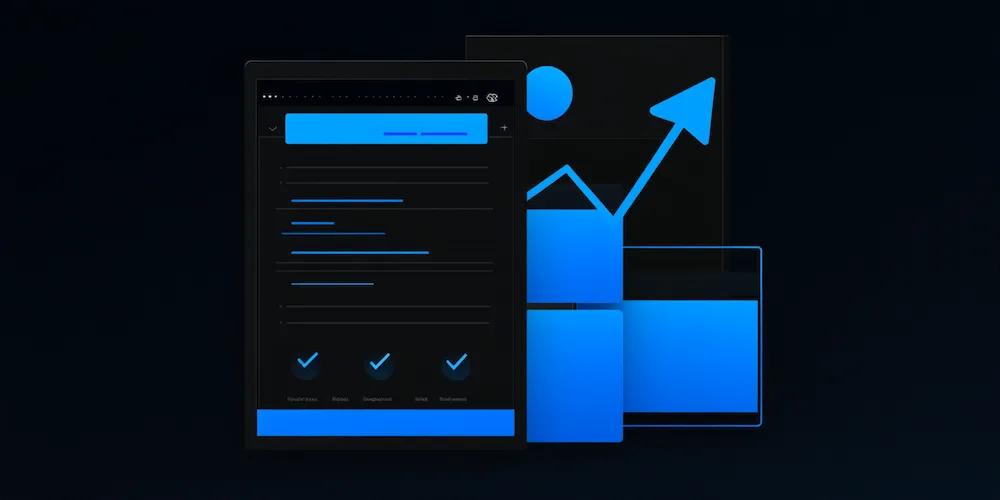Sunday, September 22, 2024
How to Migrate Your Website Without Losing Traffic: Technical SEO Checklist

Migrating a website without losing traffic can feel like walking a tightrope. You want to improve your site, but you don't want to sacrifice the traffic you've worked so hard to build. The key to a smooth transition lies in thorough preparation and careful execution.
First, you need to understand your current site's performance. Knowing where you stand helps you set realistic goals and measure your success post-migration. As a digital marketing manager, you know that a slip-up here could mean a significant dip in your metrics, and that's a risk you can't afford. Here's a detailed pre-migration checklist to guide you through the process.
Pre-Migration Checklist
Perform a Full Site Crawl
Start by performing a full site crawl using tools like Screaming Frog or JetOctopus. These tools help you identify all existing URLs, redirects, and the overall site structure. By understanding the current layout and content, you can ensure that nothing gets lost during the migration. This step is crucial for maintaining your site's SEO value and user experience.
Set Migration Goals and KPIs
Define specific goals for the migration. Whether you aim to improve user experience, boost SEO, or enhance site performance, having clear objectives will guide your efforts. Establish key performance indicators (KPIs) to measure success. These could include metrics like increased organic traffic, higher conversion rates, or improved page load times. Clear goals and KPIs will help you evaluate the migration's effectiveness. Considering these considerations before merging can also help you set realistic goals and avoid common pitfalls.
Benchmark Current Site Performance
Record your current traffic, rankings, and conversion rates using tools like Google Analytics, Search Console, and rank trackers. This data provides a baseline to compare against after the migration. Knowing your starting point helps you understand the impact of the migration and identify areas that need improvement. Regularly monitoring these metrics ensures that you stay on track and achieve your migration goals. Understanding the content migration importance can further highlight why benchmarking is crucial.
Map URL Redirects
Create a spreadsheet mapping old URLs to their new destinations. Ensure all pages are accounted for to prevent 404 errors post-migration. Proper URL mapping is essential for maintaining your site's SEO value and ensuring a seamless user experience. Double-check that all redirects are correctly set up to avoid any disruptions. This step helps preserve your site's authority and traffic during the transition.
Preparing the New Site
You've got your current site data and goals locked down. Now it's time to set up your new site for success. This stage is all about laying a solid foundation to ensure everything runs smoothly once you flip the switch.
Choose an Ideal Site Architecture
Organize your content into a logical, user-friendly structure. Group related content together and ensure that users can easily find what they need. Consider how visitors navigate your site and how internal linking can guide them through your content. A well-thought-out URL structure also plays a significant role in making your site easy to navigate and understand for both users and search engines. Building a scalable website can help you manage future growth effectively.
Optimize On-Page Elements
Ensure that titles, meta descriptions, headers, and content are optimized. Each page should have a unique title tag and meta description that accurately describe its content and include relevant keywords. Headers should be used to break up content and make it easier to read, while also signaling the structure of the page to search engines. Implement schema markup where appropriate to help search engines understand the content and context of your pages better. This can enhance your visibility in search results through rich snippets. Additionally, following B2B website best practices can further optimize your on-page elements.
Configure SEO-Friendly URLs
Create concise, descriptive URLs that include target keywords. This helps search engines understand the content of your pages and improves your chances of ranking for those keywords. Use hyphens to separate words in URLs, making them easier to read for both users and search engines. Avoid special characters, which can cause issues with URL encoding and make your URLs look messy.
Set Up 301 Redirects
Implement permanent 301 redirects from old URLs to new ones. This ensures that any traffic to your old URLs is seamlessly directed to the new URLs, preserving your site's SEO value. Use the URL mapping document you created during the pre-migration phase to ensure accuracy. Double-check that all redirects are correctly set up to prevent any 404 errors, which can negatively impact user experience and SEO.
How to Execute the Website Migration
This is the moment of truth. You've done the prep work, but now it's all about execution. The stakes are high, and the pressure is on to get your website migration right the first time.
Choose a Low-Traffic Window
Plan to launch your new site during a period of typically low site traffic. This minimizes the impact on your users and reduces the risk of significant disruptions. Avoid peak days and times when your site experiences the highest traffic. For example, if your site sees the most visitors during weekday afternoons, consider launching in the early morning or late evening, or even on a weekend. This approach gives you more control and flexibility to address any issues that arise without affecting a large number of users.
Implement Redirects and Launch Site
When you're ready to push the new site live, ensure all your redirects are correctly implemented. Use the URL mapping document you created earlier to verify that every old URL points to the appropriate new URL. This step is vital to maintain your site's SEO value and ensure users find the content they are looking for. After launching, closely monitor the site for any immediate issues or errors. Check for broken links, missing pages, and any other problems that could disrupt the user experience or affect your site's performance. Quick identification and resolution of these issues will help maintain a smooth transition.
Submit XML Sitemaps
Update your XML sitemaps to reflect the new site structure and URLs. This helps search engines understand the changes and index your new site correctly. Submit the updated sitemaps to Google Search Console and Bing Webmaster Tools. This step ensures that search engines are aware of your new URLs and can start indexing them promptly. Regularly check the status of your sitemaps in these tools to ensure there are no errors and that all pages are being indexed as expected. Incorporate this into your overall migration strategy.
Update External Links
Reach out to webmasters who link to your old URLs and request updates to the new URLs. This helps preserve the SEO value of these backlinks and ensures users are directed to the correct pages. Prioritize high-value links from authoritative domains, as these have the most significant impact on your site's SEO. Use tools like Ahrefs or SEMrush to identify these valuable backlinks. Communicate clearly with the webmasters, providing them with the new URLs and explaining the importance of updating the links. This proactive approach helps maintain your site's authority and traffic during the migration process.
Post-Migration Checklist
The site is live, but your work isn't done yet. This phase is about ensuring everything is running smoothly and addressing any issues that pop up.
Crawl the New Site
Run a full crawl of your new site to identify any missing pages, broken links, or redirect chains. Use tools like Screaming Frog, DeepCrawl, or Sitebulb for this task. These tools will help you discover issues that could affect user experience and SEO. Look for any pages that might not have been transferred correctly or links that no longer work. Redirect chains can slow down your site, so ensure that all redirects are direct and efficient.
Monitor Search Console for Errors
Keep an eye on Google Search Console for any crawl errors, 404s, or indexing issues. These errors can indicate problems that need immediate attention. Regularly check the Coverage report to see if Google is having trouble accessing any parts of your site. Address any issues promptly to avoid negative impacts on your search rankings. Fixing these errors quickly helps maintain your site's visibility in search results.
Track Key Performance Metrics
Monitor changes in organic traffic, rankings, and conversion rates. Use tools like Google Analytics and your preferred rank trackers to keep an eye on these metrics. Compare the data against your pre-migration benchmarks to gauge the success of your migration. Look for any significant drops or improvements in traffic and rankings. This comparison will help you understand the impact of the migration and identify areas that may need further optimization. Implementing a scalable tech stack can ensure that your site can handle increased traffic and growth.
Conduct Regular Site Audits
Schedule ongoing technical SEO audits to identify potential issues before they become major problems. Use tools like Ahrefs, SEMrush, or Moz to automate the process. These tools can help you find and fix issues related to site speed, mobile usability, and other technical aspects that affect SEO. Regular audits ensure that your site remains optimized and performs well in search engine rankings. They also help you stay ahead of any new issues that might arise as your site evolves.
For a seamless website migration that maintains your traffic and enhances your web presence, consider partnering with Webstacks. Their expertise in choosing the right CMS and providing comprehensive migration checklists can ensure a smooth transition.



